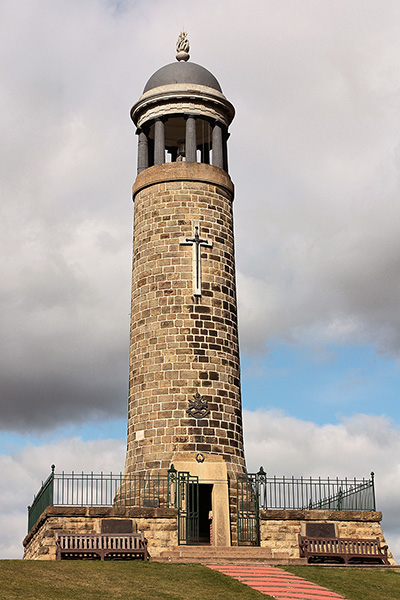 |
| Sherwood Foresters' Monument |
 |
| Sherwood Foresters' Monument |
Crich a village lying SE of Cromford in Derbyshire is probably best known now for the National Tramway Museum. Crich is only 8 miles from junction 28 on the M1. So, if trams are your thing then this is the place for you. The facade of the old assembly rooms in Derby forms the frontage of the museum buildings.
Of more interest to me at this time of commemorations of the Great War, is the monument to the Sherwood Foresters on the nearby hill. It was buit in 1923 and is 1000 feet above sea level. It is said that eight counties can be seen from the summit. As you ascend the hill there is space to park and a small cafe and shop with information about the regiment and the monument. You can also climb up inside the tower.
The Sherwood Foresters were an infantry regiment recruited in Derbyshire and Nottinghamshire. First formed in 1881, the 45th Regiment of Foot (Nottinghamshire) first raised in 1741 and the 95th Regiment of Foot (Derbyshire) first raised in 1823 became the 1st and 2nd Battalions of the new Sherwood Foresters (Derbyshire Regiment). The Derbyshire and Royal Sherwood Foresters Militias became the 3rd and 4th Battalions. These were augmented by the 1st and 2nd (Derbyshire) and 3rd and 4th (Nottinghamshire) Volunteer Battalions. The importance of the Nottinghamshire origins was made clearer in 1902 when the regiment was named The Sherwood Foresters (Nottingham and Derbyshire Regiment). Through all the mergers that have taken place in the last forty years, the regiment survives as the 2nd Battalion of the Mercian Regiment.
The Sherwood Foresters saw action in the Boer War and during the Great War had 33 battalions. A total of 140,000 men served of which 11,400 were killed. Twenty battalions went overseas on the Western Front as well as to Gallipoli, Italy and the Middle East. Members of the regiment were awarded 2,000 decorations including nine Victoria Crosses. There is a Roll of Honour Website and artefacts are displayed in two museums in Nottingham and in Derby.
Arthur Mee wrote that when he visited in the 1930s, a new brass tablet had just been added to the memorials set before the monument. It was to Sir Horace Smith-Dorien (1858-1930), colonel of the regiment for 25 years, on which are the famous messsage he sent out to his men at Le Cateau in 1914, "Gentlemen, we will stand and fight." Here he fought a vigorous and successful defensive action contrary to the wishes of the Commander-in-Chief Sir John French, with whom he had had a personality clash dating back some years. Sir John French, not the most inspiring or enterprising soldier, who performed very badly as commander of the British Expeditionary Force, claimed that Smith-Dorrien should have been court-martialled for not retreating from Le Cateau when ordered. In the spring of 1915 Smith-Dorrien commanded British Second Army at the Second Battle of Ypres. He was relieved of command by French for requesting permission to retreat from the Ypres Salient to a more defensible position. French was in due course replaced by General Haig. Dorien played little further part in the Great War but was governor of Gibraltar from 9 July 1918 – 26 May 1923.
In his younger days, Smith-Dorien was one of the few survivors of the Battle of Isandlwhana on 22 January 1879 during the Zulu War. About 20,000 Zulu warriors, armed largely with assegais and cow hide shields, attacked a force of 1,800 British, colonial and native troops together with about 400 civilians. They were armed with modern rifles and two field guns. Despite their technical advantage the British forces were overrun with the loss of 1,400 while the Zulus lost about 1000. After his life as a soldier, Smith-Dorien died from injuries sustained in a car crash in 1930.
The parish church of St. Mary in Crich is Grade 1 listed and dates from 1135. It has a Norman font.
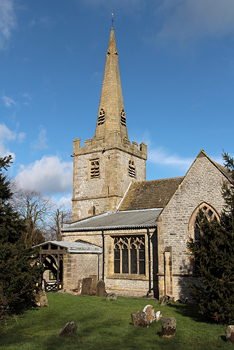 |
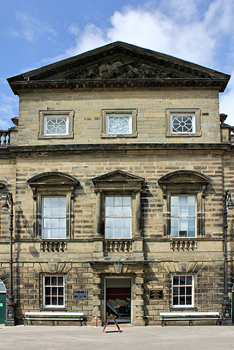 |
|
| St. Mary's | Assembly Room Facade | |
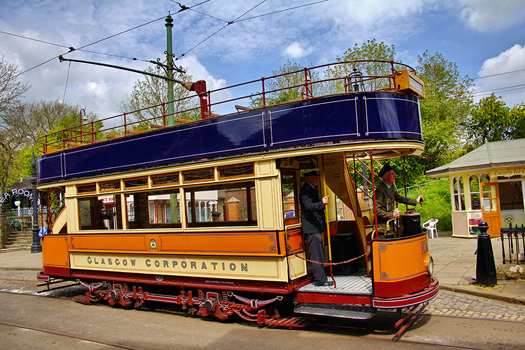 |
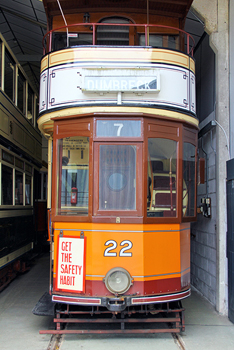 |
|
| Glasgow Tram | Tram to Dumbreck |
Wikipedia Article on Sherwood Foresters,
Crich Village,
Battle of Isandlwhana,
Sir Horace Smith Dorien.
The Buildings of England, Derbyshire, by Nikolaus Pevsner, first published by Penguin in 1953. Revised by Elizabeth Williamson, 1978 and first printed by Yale University Press in 2002.
The King's England, Derbyshire, by Arthur Mee, Hodder and Stoughton, 1937.